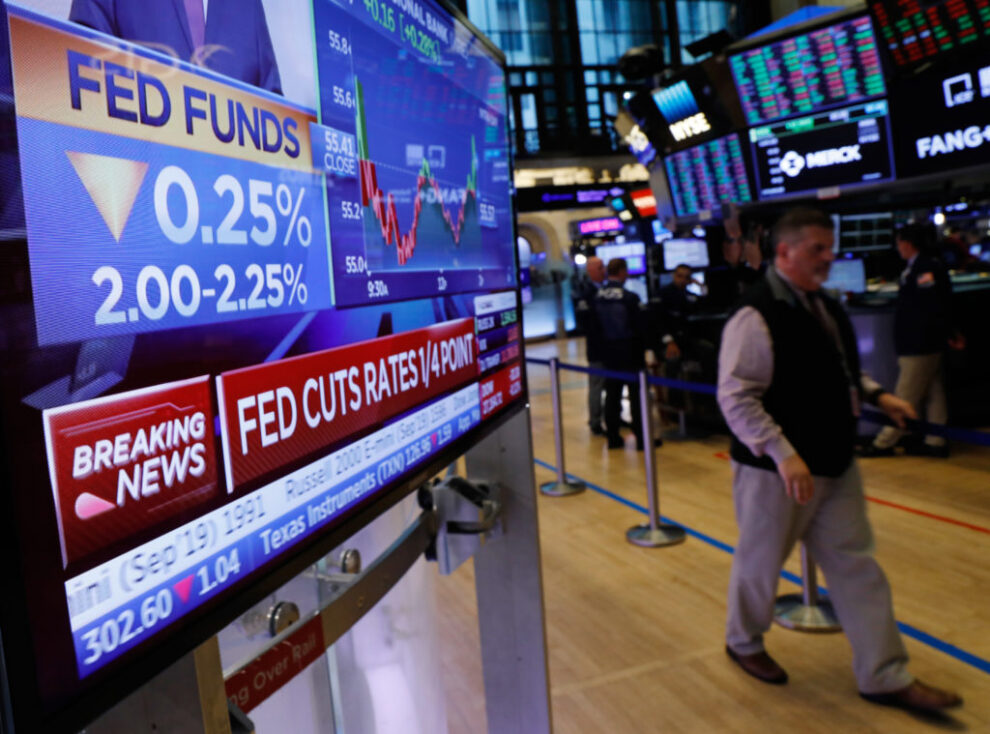Regardless of how much or little an upcoming ‘credit crunch’ affects the US economy, there are signs consumer behaviour is starting to turn
US Federal Reserve (Fed) officials, increasingly confident they have nipped a potential financial crisis in the bud, now face a difficult judgment on whether demand in the US economy is falling and, if so, whether it is coming down fast enough to lower inflation.
If the US central bank’s policy meeting two weeks ago was dominated by concern that a pair of bank failures risked broader financial contagion — a potential reason to pause further interest-rate increases — debate has quickly refocused on whether tighter monetary policy has started to show its effect on the broader economy, or if rates need to rise higher still.
The decision will be a critical one as the Fed plans the final steps in what has been a historic rate hiking cycle, with policymakers still hoping to avoid the sort of deep economic downturn triggered by raising rates too far, but also determined not to do too little and allow inflation to remain high.
The nine rate hikes delivered by the central bank since March of 2022 have pushed the benchmark overnight interest rate from the near-zero level to the current 4.75%-5.00% range, a tightening pace not seen since Paul Volcker was Fed chair in the 1980s. Consumer and business interest rates have followed suit.
Yet data released on Friday showed the Fed’s preferred measure of inflation was still running at 5% annually, more than double the 2% target, and projections issued by Fed policymakers on March 22 indicated rates needed to rise a bit more. Also embedded in those projections is the sort of rise in the unemployment rate, from the current 3.8% to 4.6% by the end of 2023, and growth slowdown typically associated with recession, something Fed Chair Jerome Powell and his colleagues still maintain they can avoid.
“It is absolutely a balance … There are uncertainties,” Boston Fed president Susan Collins said in an interview with Bloomberg Television on Friday. “We do need to balance the risk that we don’t do enough … don’t hold the course, and don’t bring inflation down … At the same time I do monitor the data, looking at when we might see the economy turning. … It is early days yet.”
Richmond Fed president Thomas Barkin struck a similar note last week. “Inflation is still very high. The job market is still very tight,” he told reporters. “When you raise rates there’s always the risk of the economy softening faster than it might have otherwise. If you don’t raise rates, there’’s the risk of inflation getting out of control.”
That back-and-forth will play out between now and the Fed’s next policy meeting on May 2-3, when officials will decide whether to press ahead with another quarter-of-a-percentage-point rate increase and signal if even more hikes are to come, or defer to early evidence that consumers are finally feeling the pinch of tighter credit and higher borrowing costs.
On an inflation-adjusted basis, consumer spending dipped in February, while more recent weekly data on credit card spending from retail banking giants such as Citi and Bank of America pointed to a consumer pullback. Consumer sentiment has also edged lower, a possible precursor to retrenchment.
The labour department’s release this coming Friday of the March employment report will be an important snapshot for the Fed of whether a red-hot job market is cooling — something that would also cause demand to slow.
Investors currently regard the Fed’s rate decision in May as a toss-up, the first time that has been the case since the current tightening cycle began in March of 2022.
Concerns remain about the banking sector and the condition of credit markets.
At the last Fed meeting, Powell noted that even if further bank failures are avoided, lending institutions may still become more cautious and, by curbing access to credit, slow the economy faster than anticipated. That is partly how monetary policy is supposed to operate, but if the process goes too far or too fast it could boost the risk of a recession, something Minneapolis Fed president Neel Kashkari has warned about.
The possibility of an acute crisis, however, seems to have receded. Fed emergency lending to banks, which jumped in the week after the March 10 collapse of Silicon Valley Bank and failure of Signature Bank two days later, declined last week in a sign that financial sector stress was easing.
Overall credit provided by banks fell slightly in the week ending March 22 to a seasonally adjusted level of $17.53-trillion from $17.6-trillion the week before. Overall bank deposits fell, but rose slightly at the smaller institutions where recent financial stress has been focused.
Even if credit slows or dips, that may not translate clearly into less spending — and lower inflation — as long as the job market remains as strong as it is.
“People will continue to spend as long as they get paid,” said Yelena Shulyatyeva, senior US economist with BNP Paribas. “They get a little bit less access to credit, is it going to really affect the decisions? It will, but only at the point at which they stop getting paid” because of a slowing economy and rising unemployment.
‘Marked change’
But regardless of how much or little an upcoming “credit crunch” affects the economy, there are signs consumer behaviour is already starting to turn.
The personal savings rate, for example, has risen steadily from 3% — a pandemic-era low and well below the level of recent years — to 4.6%, a textbook reaction to the higher yields savers can now earn on money market funds and other short-term cash accounts, with less disposable income left for spending.
Recent spending and savings data show “a marked change in consumer behaviours … with inflation prompting more caution,” Diane Swonk, chief economist at KPMG, wrote after the release last week of the most recent personal consumption statistics.
A recent decline in consumer sentiment was coupled with a drop in inflation expectations, something that could give the Fed confidence to be more cautious with any further rate increases, allowing its inflation fight to spool out over a longer time but with less risk of a full-on recession.
Karen Dynan, a Harvard University economics professor and senior fellow at the Peterson Institute for International Economics, said her outlook was for the Fed to face a “slog” against inflation that will require more rate increases but, because of the strength of household balance sheets and the labour market, skirt a recession.
Recent bank stress “has done a bit of the Fed’s work for it, but I don’t view it as a full substitute,” she said.
Ultimately, the labour market will have to give way at least somewhat, lowering demand and pushing the US economy’s output far enough below its potential for prices to fall.
“I don’t think increasing ‘slack’’ is the whole story,” Dynan said, with things like improved supply and falling rents helping lower the pace of price increases, but “some cooling of consumer and labour demand will be needed.”
Source: Business Live
















